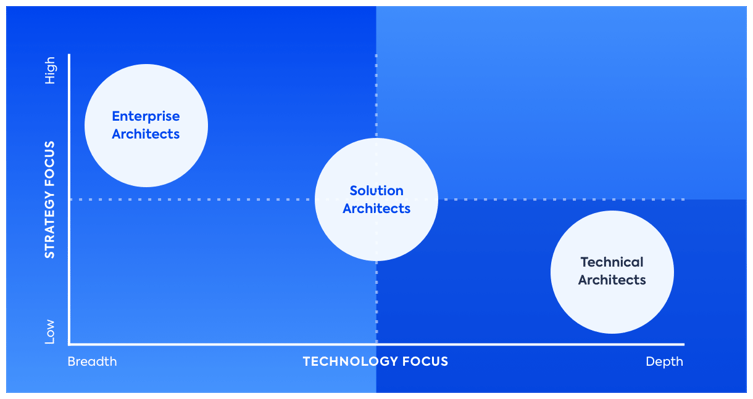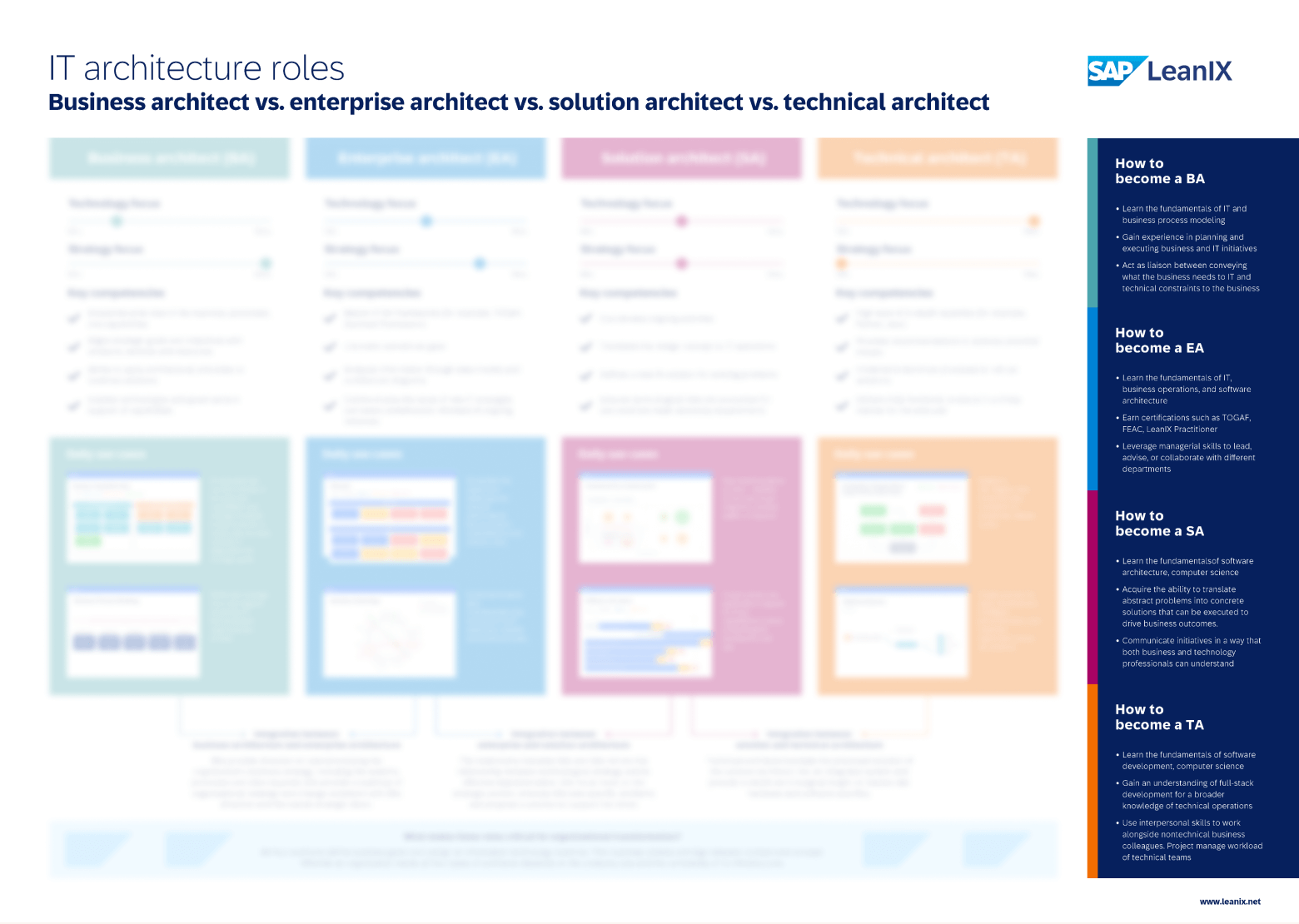What are the must-haves for a successful solution architect?
Solutions architects require both technical knowledge and people skills to be an asset in the position. Solutions architects value the following skills, qualifications, and experience:
- A Bachelor’s or post-graduate degree in IT, computer science, software engineering, or equivalent.
- Certificates in solutions architecture-related fields to demonstrate competency.
- At least five years of hands-on experience in software development or related fields.
- Subject matter expertise in the field of work.
- Good understanding of business processes.
- Strong organizational and analytical skills.
- Experts in communication and negotiation.
Comparison to other roles
Solution architect vs. software architect
The main difference between a solutions architect and a software architect is their main focus. The solution architect's focus is on developing and documenting solutions for specific architectural issues intended to enable a particular business outcome.
Alternatively, a software architect will be involved in the build phase of the project. Their job is to define and document software structures based on known functional and non-functional requirements. This will enable software engineers to produce the solution as defined, reviewed, and approved by the solution architect.
Solution architect vs. AWS cloud practitioner
AWS (Amazon Web Services) is a cloud computing platform that most IT professionals will have some experience with. An AWS cloud practitioner is someone who has achieved a certificate of AWS competency.
Most solutions architects will hold one of the many AWS cloud practitioner certifications but also work with other cloud systems and technologies. Solutions architects will leverage their knowledge of AWS to produce solutions.
Solution architect vs. software engineer
While a solutions architect is responsible for designing solutions for a project, the software engineer is the one who makes it happen.
Along with developers, engineers need to understand and interpret the product requirements to build the apps, systems, and solutions to achieve the desired outcome. They also need to be able to resolve problems and address bugs that might arise during the development process.

Solution architect vs. application architect
An application architect is similar to a software architect. They are monitoring a single application to understand the various interactions between the different components, and other business apps and can define limitations and requirements for source code.
Like solutions architecture, it is one of the many pillars of enterprise architecture. Solutions architects will work with the whole application landscape, but not exclusively.
Solution architect vs. cloud architect
A cloud architect is responsible for overseeing a company's cloud computing strategy. SAs need a strong knowledge of cloud computing systems and work with cloud architects to develop solutions related to the systems in place.
On the other hand, a cloud architect will adopt plans, develop cloud application designs, and monitor cloud management. They oversee the application architecture and deployment within cloud environments (public cloud, private cloud, and hybrid cloud).
Conclusion
Solution architects are one of several domains that form the pillars of IT. As one of a few IT experts and leaders whose goal it is to develop enterprise-wide infrastructure plans and projects to achieve goals, improve systems and manage solutions.
They will work directly with EAs, TAs, business architects, etc. to achieve future state architecture. IT architects and their respective teams work through various aspects of a project life cycle; devising, planning, and designing the implementation of improved processes, business capabilities, and applications.
The synergy between these roles is key in building a long-lasting, effective enterprise architecture.







/EN-WP-EA-Tomorrow-Resource_Page_Thumbnail.png?width=260&height=171&name=EN-WP-EA-Tomorrow-Resource_Page_Thumbnail.png)


